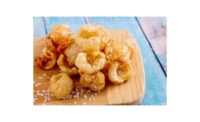Snack attack!
For a mature category, the meat-snack segment is certainly coming on strong with aggressive product development, advanced packaging, and strategic marketing efforts.
By Lynn Petrak, Special Projects Editor
“Virtually every major grocery chain or mass marketer is considering a house brand because of the dynamic growth in national brands,” Firestien concludes.
Oberto has pursued smaller portion sizes, as well, through its line of Jerky Bites. Interestingly, there is activity as well on the opposite side of the size scale. Jack Link’s Snack Foods, Minong, WI, has enjoyed strong initial reaction to its Teriyaki-flavored 2-ounce Super Size Beef Stick, a larger portion designed to appeal to adult on-the-go consumers.

Report Abusive Comment